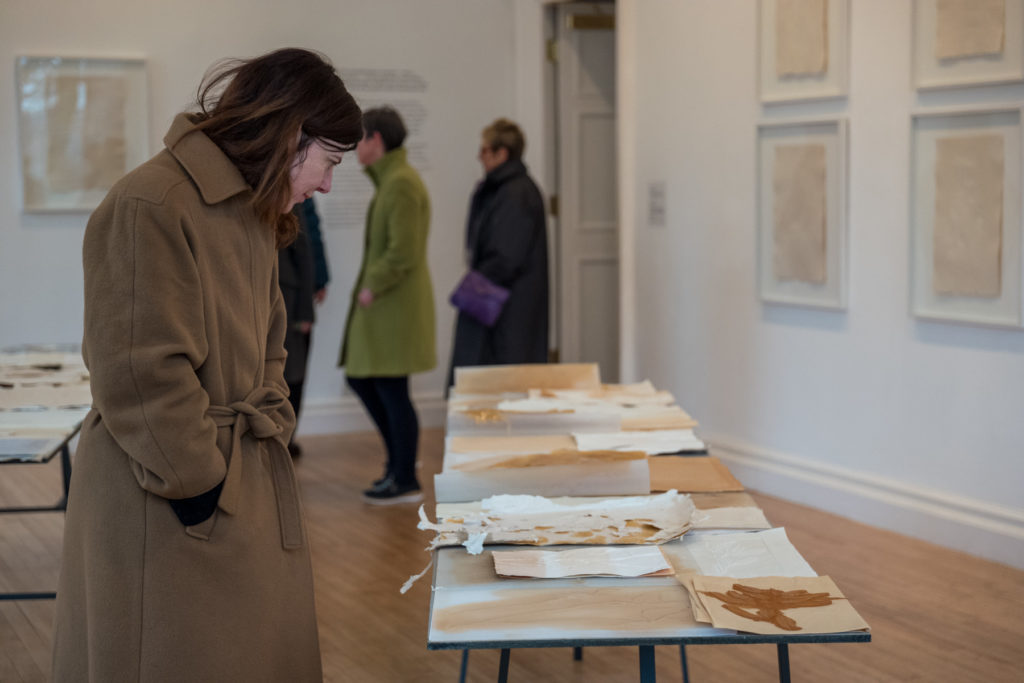
Photograph courtesy of Caterina Salvi
As introduced in part one of this reflection on Sensing and Presencing the Imperceptible, artist Siân Bowen recently held a fascinating micro-conference at RBGE, as part of her prestigious Leverhulme fellowship and to complement her concurrent exhibition at Inverleith House.
Here, our exhibitions volunteer Alessandra Leruste reflects on the discussion-filled afternoon of the micro-conference. Alessandra has an MA in History of art from the University of Edinburgh and has been volunteering at Inverleith House for half a year.
I volunteer at Inverleith House and have spent a lot of time in the rooms of Siân Bowen’s After Hortus Malabaricus: Sensing and Presencing the Imperceptible. I am convinced this is the best way to enjoy the exhibition: come back every day until the end of the exhibition, see it under as many lights as the month of March has to offer, move around, take your time. This is our privilege as volunteers; we get to build our own long-term relationship with the shows.
At the end of February, the Royal Botanic Garden of Edinburgh organised a micro-conference to accompany Bowen’s exhibition. Academics and artists shared their research and thoughts about the themes surrounding the exhibition. The main subjects that linked the talks together were: presencing, the meaning of the word and its relevance to After Hortus Malabaricus; the imperceptible and its implications in science, knowledge and art; drawing as a scientific and artistic practice and how it relates to the imperceptible; nature, the planet, the climate, and our place as humans in relation to them.
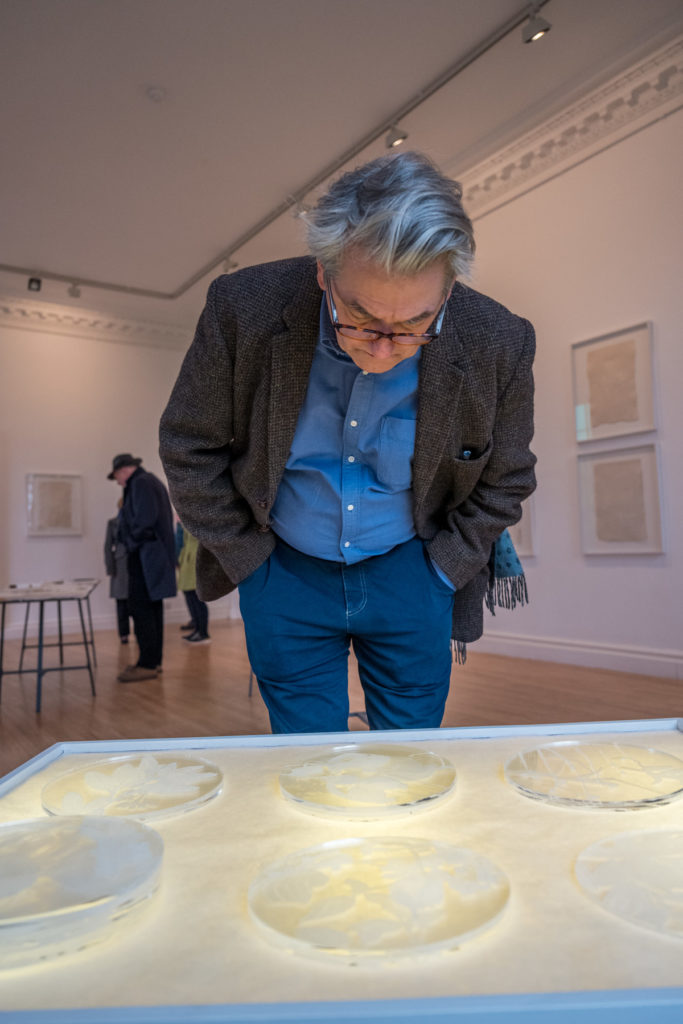
Photograph courtesy of Caterina Salvi
PRESENCING
Joel Fisher started the conversation over the meanings of the words that make up the exhibition title. As a gallery visitor, it is easy to ignore the words and focus on the visual and material – I barely paid attention to the exhibition’s full title myself. However, the title and the people discussing its implications during the micro-conference added a whole new layer of meanings and richness to Bowen’s work for me.
Fisher helped us with this unfamiliar word: “broadly speaking presencing means bringing something, from somewhere, into focus (…) In presencing the nebulous becomes a transportable entity — with all the transactional potential that implies.” It is an active verb, a conscious effort. With After Hortus Malabaricus, Bowen displaces the image and idea of the plants from their original habitat in India to the Royal Botanic Garden of Edinburgh. She also brings a botany treatise written in the 1600s to our present. It will be useful to keep this concept in mind as we discuss the other themes.
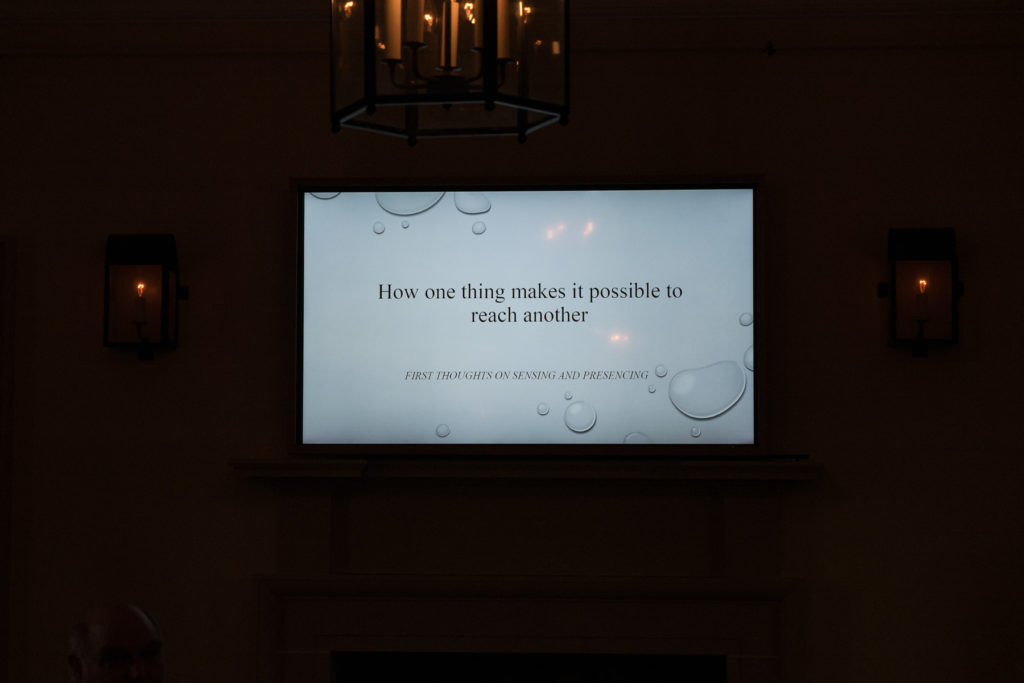
Photograph courtesy of Caterina Salvi
THE IMPERCEPTIBLE
Dr. Sarah Casey interrogated the notion of the “imperceptible.” How do we define it? Is it the unseen, the unintelligible, what is at the edge of the senses? She proposed a model that positioned the imperceptible at the boundaries of speculation and empirical evidence; the imperceptible is the fuzzy borders of thoughts and knowledge. This definition and the whole concept of imperceptible remain themselves fuzzy, and there will always be problems with the ways we choose to represent knowledge. However, visualising knowledge and the imperceptible as territories can help us think of what it is like to “dwell at the boundaries”, try and work in this uncomfortable domain. Casey argues that artists should not strive to control and reveal, but rather adapt and dwell on the boundaries.
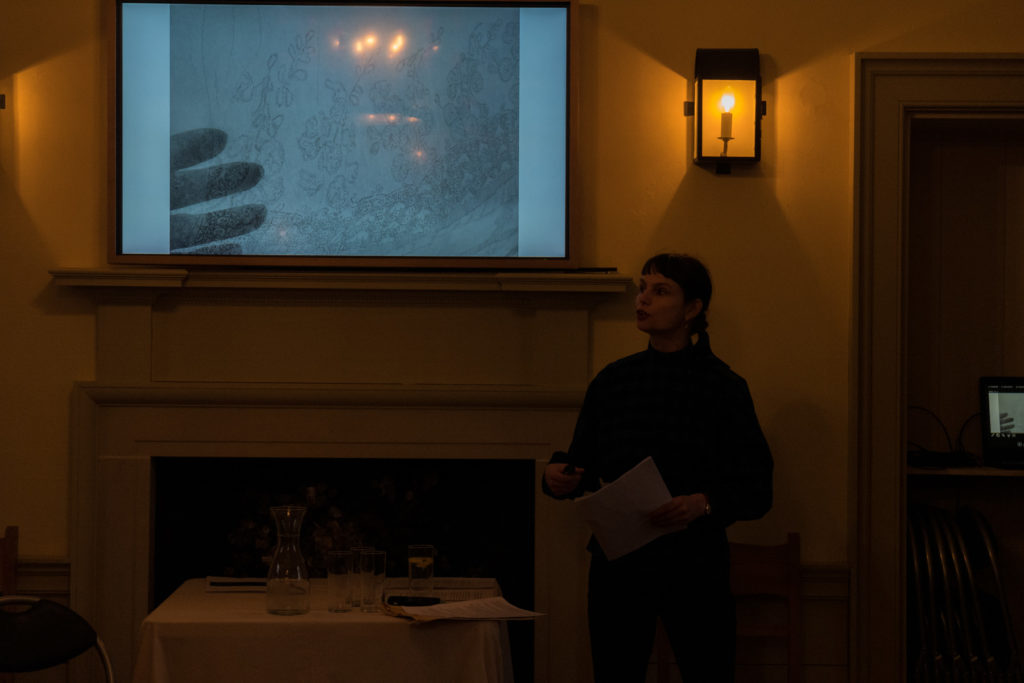
Photograph courtesy of Caterina Salvi
This forces us as spectators to dwell, to “retune and re-sensitise ourselves to be receptive to states of precarity.” A few visitors have shared their frustrations over not being able to properly see the drawings from Collection: Transcribe. You have to take your time, build a relationship between yourself, the piece, space, and light. I loved another volunteer Caroline’s words on these pieces: “It’s like night in the jungle with only the moon for light…” A different volunteer made a good point during the discussion at the end about this exhibition and the one before it, Levon Biss’s Microsculpture. Both had adjacent themes, working with something in nature that is seldom visible to most of us. What differed vastly was how they went about doing it. Biss exposed everything, using thousands of shots to recreate the most detailed, large-scale images of insects. Bowen’s work is not about exposing – it embraces and works with the imperceptible and precarious. You do not approach both exhibitions the same way, and it might have made some returning visitors uncomfortable.
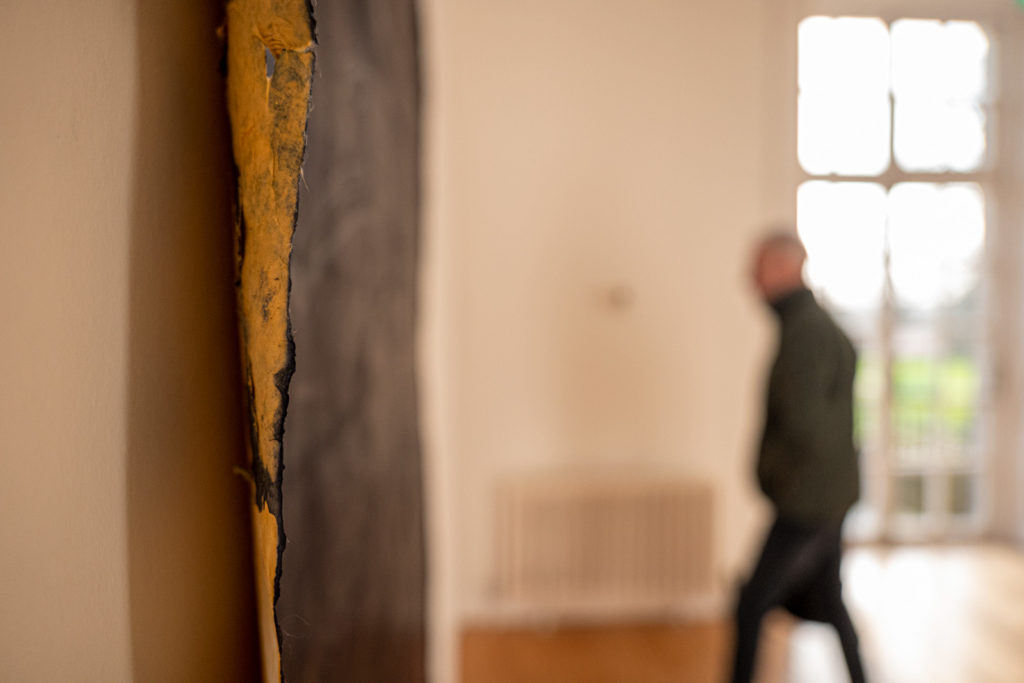
Photograph courtesy of Caterina Salvi
DRAWING
Fisher noted that observational drawing has this quality of making us see more clearly than photography – the more you draw, the more you see. In this sense, it is more akin to stone carving than painting.
Casey discussed a certain tradition of describing drawing as a way of capturing the ephemeral, what is “on the cusp of absence, the threshold of presence, barely perceptible.” The act of sketching has to be done quickly to catch something that might disappear. There is also a certain visual quality to (some) drawings that emphasises this fragility. This makes drawing an interesting medium to deal with the imperceptible. As we discussed earlier, the aim is not to take the imperceptible to control and reveal it, but to adapt and dwell on the boundaries. Drawing can allow for this type of work. Like Fisher, Casey emphasised that drawing could awaken and highlight things and experiences that would otherwise go unsaid or unused.
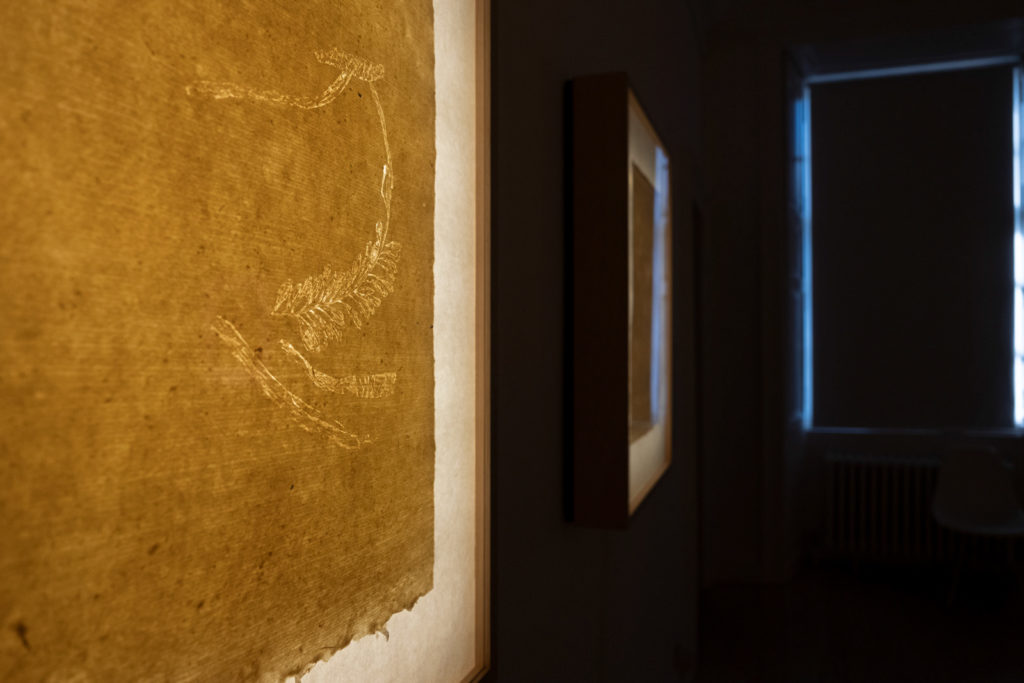
Photograph courtesy of Caterina Salvi
The medium on which Bowen drew is significant. As she described her thoughts about Bowen’s works, Jacki Perry insisted on the paper. She said, “Siân substitutes the book so we can read with something other than words.” The paper, coming from plants and taking the image of plants, is in interaction with our 5 senses (or at least we imagine it is since we cannot touch the art.) She held that books are not isolated beings, there are many relationships within them.
NATURE
This brings us to the subject of nature. Perry noted that the paper used by Bowen is made of hemp, a fibre from India and the oldest paper recorded. This adds another layer of temporality to an artistic project that already contains many different timeframes. This paper is stronger than we might perceive, referencing the resilience of the plants and speaking of climate. Perry also remarked that the films upstairs link the present with the past, and present us with a sense of urgency and hope. They demonstrate the perceptible and superimpose impressions of different times.
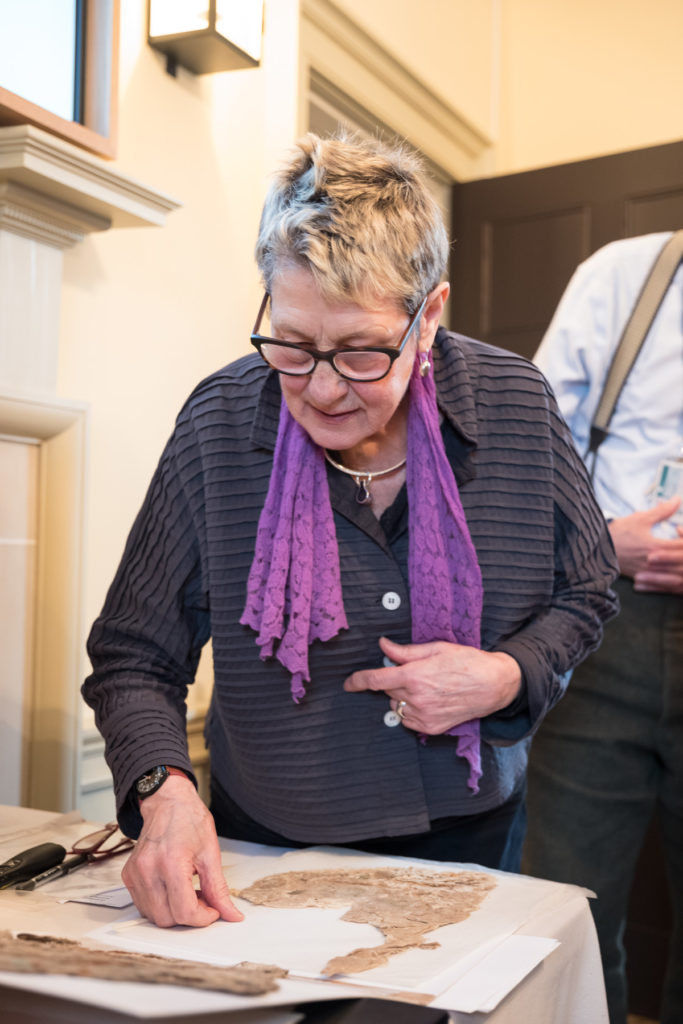
Photograph courtesy of Caterina Salvi
Professor Andrew Patrizio argued for a practice of history of art that makes the questions of nature and climate central. He has recently published The Ecological Eye (2019) where he makes the case for a still underrepresented way of approaching the discipline. In order to advocate for a political art history rooted in the green, his approach is radically non-hierarchical, which goes against common ideas of history of art as an elitist sector. The guiding principles were: sympoiesis (making with), mutuality, common opportunities, and flattening. This led him to look into anarchism and post-humanism. He discussed the idea of “thinking in a plant-like way” and how this could be applied to the arts. He took the idea of tentacularity discussed by Donna Haraway and likened it to a plant’s tendrils, with their networks and multi-directionality. The visualisation of these lines also relates to the discipline of drawing. He quoted Michael Marder talking about artists striving like plants in all directions – the concentration and the scattering.
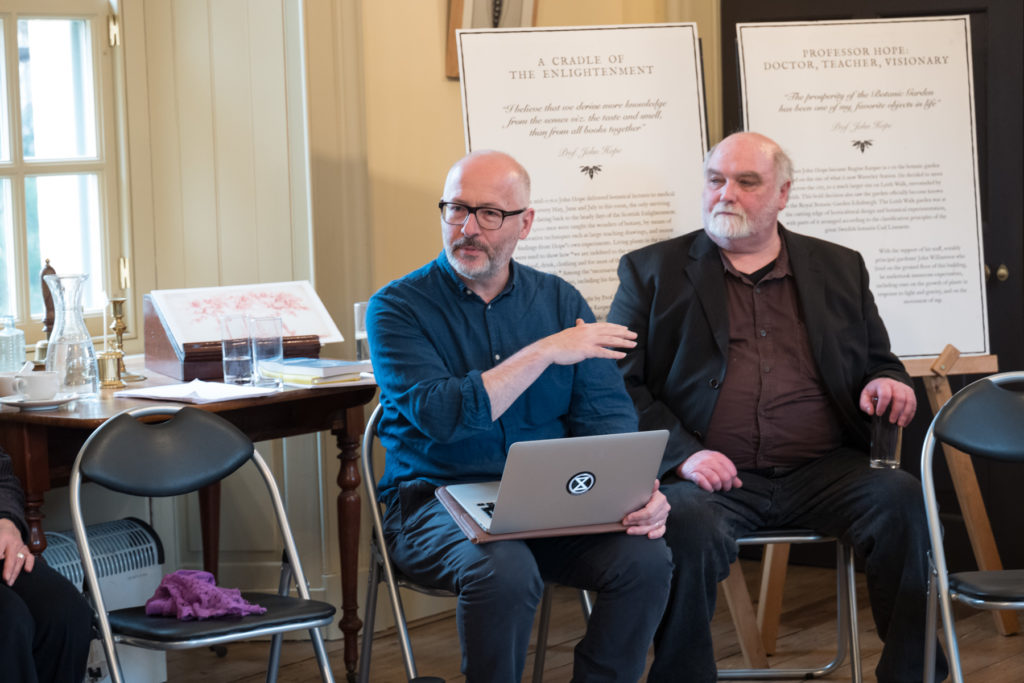
Photograph courtesy of Caterina Salvi
Patrizio interrogated the way we talk about plants, their vulnerability and their resilience. The plants often had to be this way because of the presence of exploitation. If we want to practice a political ecology, we need to call out these facts. The way we conceptualise the climate crisis matters, and Patrizio briefly examined the term “Anthropocene” and its alternatives, namely the term “Plantationocene”, which refers to our propensity to plant everything. He also interrogated the place of institutions like the Royal Botanic Garden Edinburgh, the extraction and the conservation, the violence done to plants, counteracted by care.
A CONCLUSION
We ended the talks with poetry. Dr Ian Patterson writes in a peculiar way that encapsulates the topics of the day. We are largely unaware of things that make our existence possible – what occurs within us, our direct environments, and phenomena happening in other places of the globe. We cannot feel deep time or deep space. Things that shape our lives need to be dug out and made objects of inquisition (going back to the concept of presencing). He wanted to write poetry that references this kind of knowledge, by keeping it at the level of imperceptibility, just outside our capability to take it in. When he saw Siân Bowen’s work, he thought about the process of making her drawings, and wrote poems that reflected this process in the way he understood it. He collected them in his book Time Dust (2015).
Taking notes on the event, I felt a little bit like that sketcher discussed by Casey, trying to grasp something impossible to truly, fully record: the exact words and cadences of the speakers, the atmosphere, the ideas bouncing in everyone’s head, and the dynamic of the conversations. Hopefully, this text captures the central ideas of the talks which can help the reader see the exhibition with a new point of view and nuance their understanding of Siân Bowen’s work.
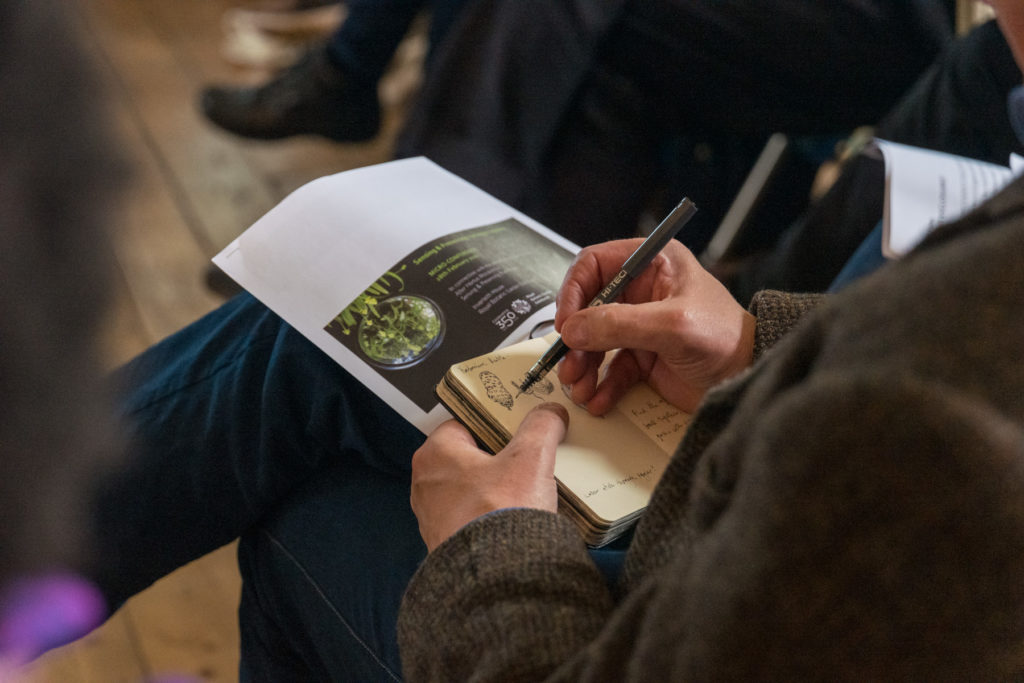
Photograph courtesy of Caterina Salvi
Published on behalf of Alessandra Leruste
Alessandra Leruste has an MA in history of art from the University of Edinburgh and has been volunteering at Inverleith House for half a year. This is her blog: readmy.art.blog
Siân Bowen’s exhibition After Hortus Malabaricus was on display in Inverleith House, RBGE, from Jan 10th 2020.
To read part 1 of this reflection on the micro-conference, by Klaudia Jaworska, please click here
